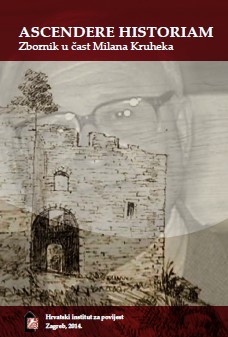Dvorske dame izvan bečkoga dvora: kako su kreirale društveno-političko ozračje ugarsko-hrvatskoga ranonovovjekovnog prostora?
Ladies-in-waiting outside of Viennese court: How did they create socio-political environment of the Hungarian and Croatian early modern period’ scope?
Author(s): Ivana Jukić
Subject(s): Visual Arts, Political history, Social history, 18th Century, History of Art
Published by: Hrvatski institut za povijest
Keywords: Eugen of Savoy; Countess Batthyány; Countess Althann; Charles VI of Habsburg; Pragmatic sanction; Čakovec;
Summary/Abstract: Socio-political everyday life of the Habsburg Monarchy was heavily shaped by the activities and life styles of the elites, their mutual relations and connections. It was not before the last two decades that the historiography has paid some attention to the “personal” in the affair of ruling as well as to the role of the ladies-in-waiting, very often owners of the wealthy estates, whose role has manifested as very important. Offcourse, the area of the Kingdom of Hungary-Croatia was not an exception. Nevertheless, these ladies are still rather unknown in Croatian historiography. Hence, the main goal of this paper is to point out the influence of the two of those ladies-in-waiting who were also the owners of the very wealthy estates in the Kingdom of Hungary-Croatia: Countess Batthyány and Countess Althann. Both were married to the much influential magnates, but also close friends and partners of the two of the most powerful men of the Habsburg Monarchy in the first half of the 18th century - the emperor and the king Charles VI of Habsburg and Eugen of Savoy. In the paper the author asks if these relations could positively reflect on socio-political relations within the Kingdom of Hungary-Croatia, or to the interests of the individual members of the Hungarian or Croatian estates’ corporations. To answer to these questions the author did her research not only based on the preserved written historical materials or secondary literature, but the author also analyses the allegorical fresco on the ceilings in one room of the Čakovec castle. This fresco was made in the 1720s on the initiative of Countess Althann, the owner of the castle. This fresco itself as well as the circumstances of its fabrications depicts the historical evidence of the importance of the associations of the political magnates in the creations of the political intrigues of the Habsburg Monarchy of that period.
Book: Ascendere historiam: Zbornik u čast Milana Kruheka
- Page Range: 301-314
- Page Count: 14
- Publication Year: 2014
- Language: Croatian
- Content File-PDF

